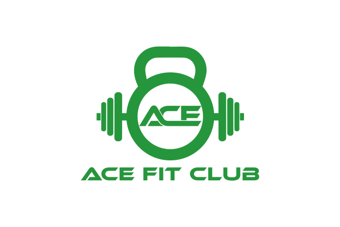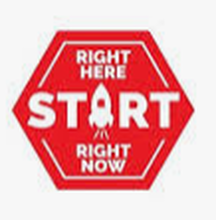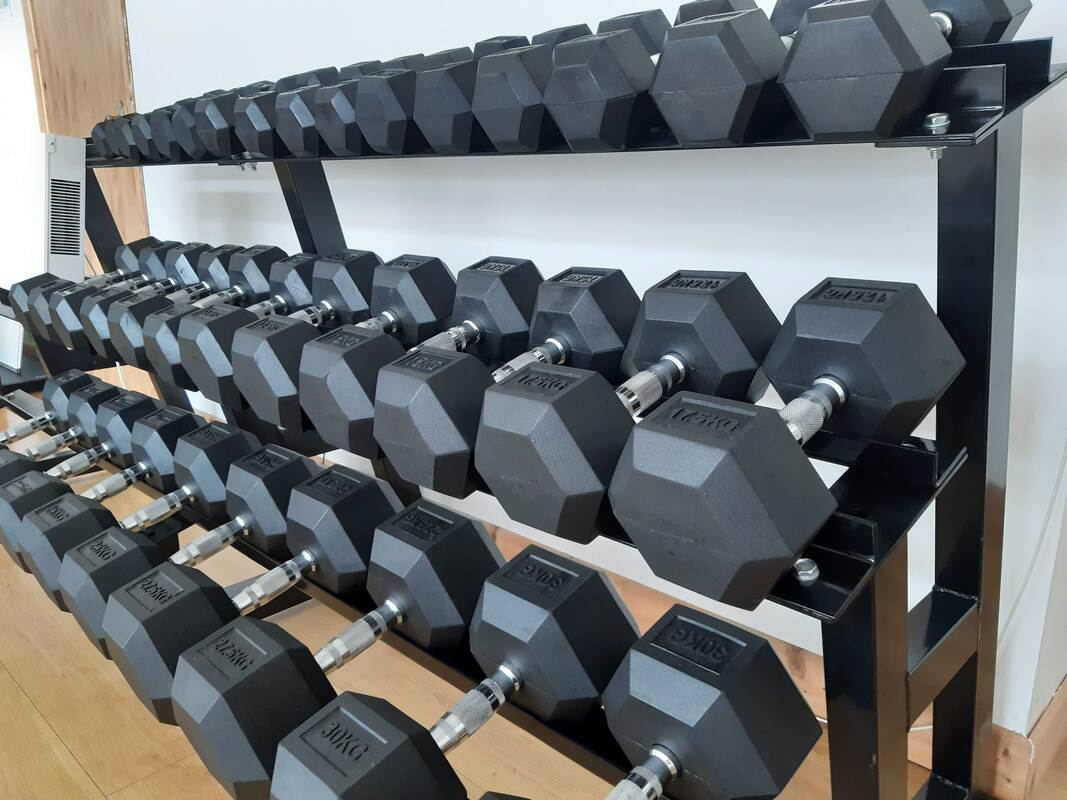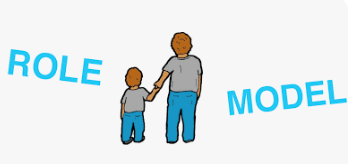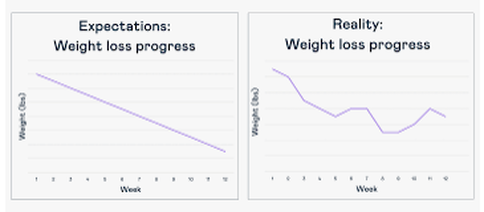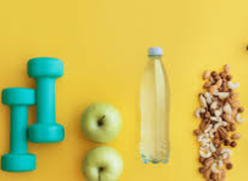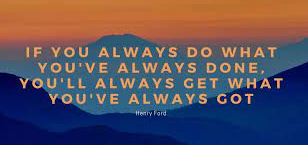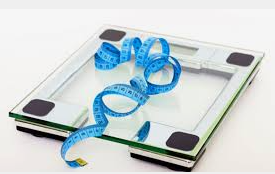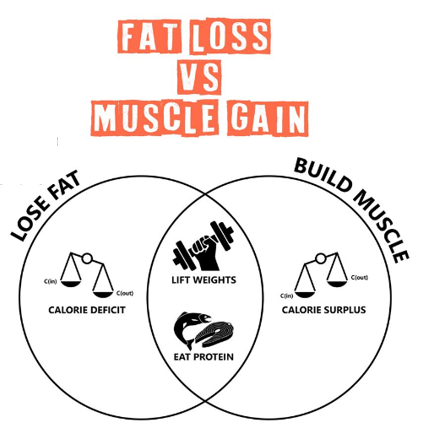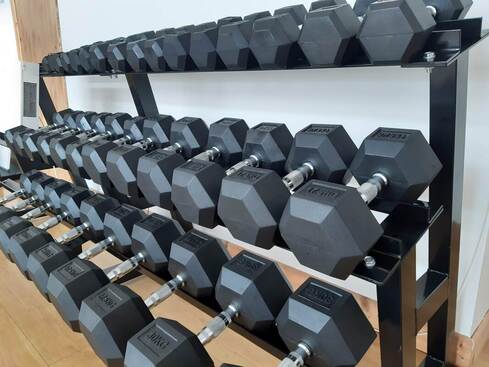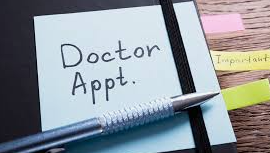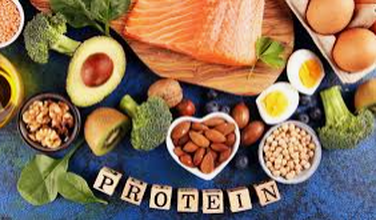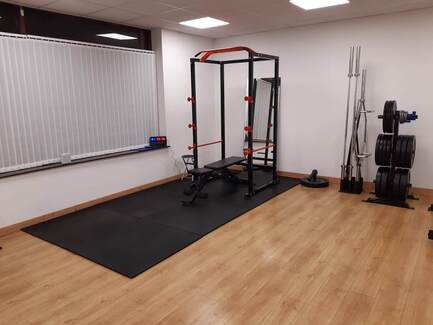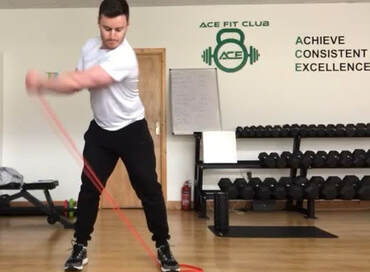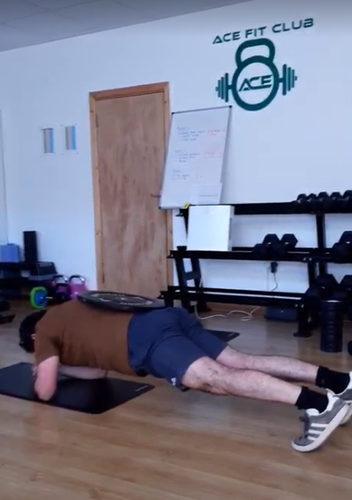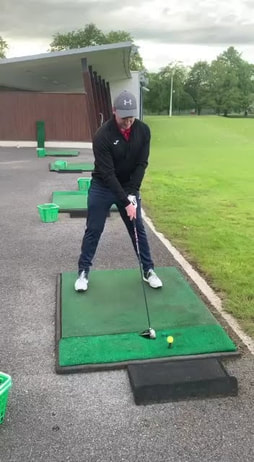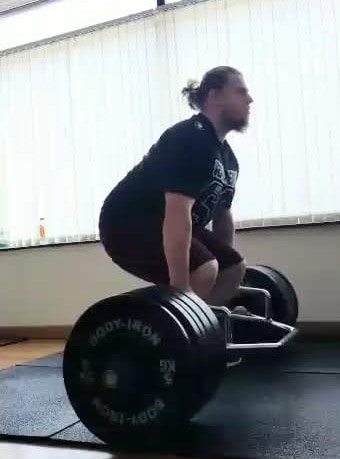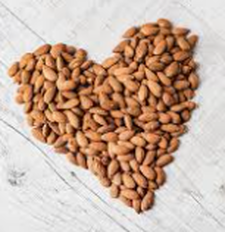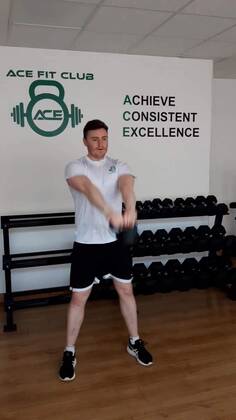|
11/12/2022 0 Comments Act on this right now!What step are you going to do today to better your health? Not tomorrow, not next Monday, not January 1st. What are you going to do today? It is easy to say I’ll start tomorrow, or next week, or in the New Year! It is easy to put off what we have wanted to do for a long time, or sometimes cause we don’t know where or how to start. But don’t put it off any longer. Make the first step. It doesn’t have to be a big thing, or multiple things, or a complete overhaul. But take the first concrete action – gradual actions/ steps are the best way to build sustainable and consistent life changing habits. It can feel nerve racking and anxious taking on something new and different, especially if we are stepping outside our comfort zone. But think of the reward and feeling you will have when you start to see the improvement in your health, well being, energy, fitness, and strength. A few examples to make it easier to take the first step: If you want to focus on your nutrition, switch from white bread/ pasta to wholemeal bread/ pasta. If you want to lose weight, eat less by using smaller plate and chew your food slowly. If you want to exercise, go for a walk today and everyday. If you want to get stronger, make a call to a Personal Trainer and arrange your first appointment. If you want to sleep better, go to bed 30 minutes earlier tonight. Make the deliberate choice to act now and not to delay any longer. One step/ action at the time and build on it in the days and weeks ahead. You will be amazed with the results and it will be sustainable for the future. #personaltraining #personaltrainer #weights #weighttraining #strength #gym #fitness #fitnessjourney #fitnessmotivation #cardio #weightloss #coach #maynooth #kilcock #clane #celbridge #leixlip
0 Comments
When it comes to getting the most out of your training, it's important to keep things varied and fresh! Thankfully, there are lots of ways you can train the same muscle groups. For example, are barbell rows the same as dumbbell rows? Or do they have different benefits? What about dumbbell shoulder presses? Are they better than barbell overhead presses? Read below as to why you should train with dumbbells.. Dumbbells are most commonly used for isolation exercises and are great for upper body work as well as exercises such as lunges, walks and carries. The main benefits of using dumbbells are. 1. Ease of use Dumbbells don’t take up much space and you don’t need a Squat Rack to use them. So, if you’re looking to get a decent strength workout in at home, then dumbbells are a great way to train! 2. Training efficiency Dumbbells are much quicker to change over than loading and unloading a barbell. So, in terms of getting in more reps, dumbbells can be really advantageous. 3. Muscle Imbalances Dumbbells are perfect for isolation work. And because you’re using your arms independently, there’s no risk of your stronger side carrying the weaker side. This is beneficial for anyone wanting to keep an eye on any imbalances they have. 4. Flexibility Using dumbbells gives you a little more flexibility in terms of choosing the angles that you train at. This can be great for anyone who struggles with joint mobility as you can maintain a more neutral grip. Dumbbells allow you to move more naturally, which is not only more comfortable but will also optimize your workouts. #personaltraining #personaltrainer #weights #weighttraining #strength #gym #fitness #fitnessjourney #fitnessmotivation #cardio #weightloss #coach #maynooth #kilcock #clane #celbridge #leixlip It's that time of the year where there are a number of events or night outs in the lead up to Christmas. One of our clients asked us during the week: "Can I go to the Christmas party if I am trying to lose weight?" What do you think? Of course they should! One day, or one evening isn't going to undo all your good work. Here are a few tips to make the most of it: 1. Plan ahead If you know you are going to have a night out, then think ahead. For example, think of your total calories for that week, and have little less on the days leading upto your night out, then you can have bit more on the day/ night of your event. Also, maybe get some extra steps/ walks/ run in that week. 2. Be smart with what you eat On the night out, one can be smart about what you eat. For example, maybe not have any bread at the start (if it is served), maybe have 2 courses instead of 3. Maybe go with a plant/vegetarian option, or with fish. 3. Alcohol Alcohol can be a tricky one. This time of the year in particular there may be a lot of alcohol flowing. There may even be a "free" bar, or bottles of wine at the table. Ideally drink in moderation. Bear in mind there are calories in alcohol, and often we eat more when we drink, we sleep worse, and we usually don't feel like working out next day! So be mindful of it, and try and decide in advance what/ how much you want to drink and stick with it. 4. Exercise/ Workout Still aim to get your regular workouts and training in that week. Again, some pre-planning maybe required. For example, if you normally workout the morning after your night out, that might not be realistic, but schedule it for that evening, or another day. 5. Enjoy yourself Most important thing is to enjoy yourself. You have worked hard all year, this is a time to celebrate and to have bit fun, catch up with people in an informal setting and enjoy yourself. Remember you didn't put the weight on in one day, and a night out isn't going to cause you to undo all your good work. Get back to it next day! #personaltraining #personaltrainer #weights #weighttraining #strength #gym #fitness #fitnessjourney #fitnessmotivation #cardio #weightloss #coach #maynooth #kilcock #clane #celbridge #leixlip 20/11/2022 0 Comments What kind of role model are you?Do you know 340 million kids are overweight? Read that again! 340 million kids are overweight! The research shows that children emulate their parents. What they see their parents doing, more than likely they will copy and do over time themselves. For that reason it is very important not just for your sake, but if you have children, then for your childrens sake that you are living a healthy lifestyle. How can you best model healthy lifestyle? 1. Eat well. This is so important for yourself, but also for your children to get into the right habit. Simple things like plant based, natural foods, rather than processed food. Ensuing priority on protein intake. Loads of fruit & vegetable. Talking about energy balance (calories in versus calories out), and minimise snacking. 2. Go to the gym/ lift weights Strength training is one of the best things to be role modelling for your kids. Why not get them involved early? For example, show them pictures of you working out, or better still have them come along occasionally to see you workout (if that’s possible), or meet you towards the end of your session. Or you could show them some of the exercises at home. As a minimum, talk to your children about it and how you feel about strength training. 3. Walk Walk wherever and whenever you can. Keep the focus on getting at least 8000 steps a day. If possible, walk you child to and from school. 4. Sleep This maybe a hard one, especially if your children are young and are not sleeping great, but it is such a vital one. Again you need to be leading by example, aiming for that 8 hours quality sleep per night. 5. Drink Water Show your children the value of drinking at least 2 litres of water a day. Demonstrate the value in water and show there is no need for sugar fizzy drinks! Show these to your children from an early age. What the child sees/ does in childhood will persist with them into adulthood. 7/11/2022 0 Comments Improvement isn’t a straight lineSome people think (or hope) when they set off on weight loss journey that they will lose set amount of weight every week e.g. lose 1lb every week, and that it will follow a straight line. They tend to get frustrated if this doesn’t happen, and some times they may stop because they think they are not making progress. The reality is that there will be ups and downs, but if you do the right things, over time there will be a downward trajectory . A few tips for holding the course: 1. Trust the process If you have studied what to do, or got good advice, then trust the process, especially if the process involved looking at it holistically and not just focussing on one element. For example, if one just focussed on diet/ food alone, and one is not getting enough sleep, then sooner or later the sleep deprivation will get the better of things and undo all the good work on the nutrition side. 2. Any change takes time This is very important. The body takes time to adjust. Any significant change can take 1-2 weeks to start showing up. So don’t stop, or don’t radically change the plan everyday without giving it enough time to show up. Ideally make one major change and allow 2 weeks to see if that makes an improvement. If it does, continue, if you feel it is not, then make another adjust and allow that another 2 weeks to settle in before making any other change. 3. Be patient with yourself It is vital that if you want to sustain the improvements for the long term, that you are patient with yourself. One might be able to drop a large amount of weight in short term, but often that involves special diets, or restrictive food. This can make life more challenging, or may not be as enjoyable to live life e.g. you may not go out for dinner to celebrate special event, or if you do go out you may not eat what you would really like to eat. Life is for living, so you should be able to enjoy what you do on an ongoing basis. So be patient with your weight loss journey and cut yourself some slack so that it is sustainable for the long term. #personaltraining #personaltrainer #weights #weighttraining #strength #gym #fitness #fitnessjourney #fitnessmotivation #cardio #weightloss #coach #maynooth #kilcock #clane #celbridge #leixlip Fueling your body with the right nutrients prior to exercise will give you the energy and strength you need to perform better. To maximize the results of your training, try to eat a meal containing carbs, protein and fat 2–3 hours before you exercise. In some cases, you won't be able to get such a meal in! This is where we turn to a quick snack, that will sustain our energy and focus for a challenging workout. Here's four main ones! 1. Rice cakes (2) with peanut butter/banana This is the perfect way to ensure you'll have energy for a tough workout. The rice cakes provide carbohydrates while the fats from the peanut butter will help ensure a slow release of energy. Add a chopped up banana to the mix and your good to go! 2. Bagel with peanut or almond butter A quick and simple snack to ensure your energy needs are met. Try adding some chopped apple on top and you will be ready for your session. 3. Coffee This is a good idea for those training in the morning or early afternoon. If you train in the evening or at night, the caffeine probably won't do your sleep that night any favors, so best to avoid it. Try a quick espresso or a normal coffee to give you that boost that's sometimes needed to workout! You'll find your focus will be on point too, so thumbs up for coffee. 4. Cereal with milk A quick and easy source of carbohydrates and protein. This will give you energy to get you through your session, just make sure to pick a balanced cereal such as weetabix, oatmeal or protein granola. You'll burn off the extra calories that this snack provides, so don't worry if it isn't one of the above! #personaltraining #personaltrainer #weights #weighttraining #strength #gym #fitness #fitnessjourney #fitnessmotivation #cardio #weightloss #coach #maynooth #kilcock #clane #celbridge #leixlip 23/10/2022 0 Comments Pushing outside your comfort zoneThe easy path is to keep doing what we have always done, that’s the safe way, we know what to do, we know what is expected of us, and we know what results we will get. But if we keep doing this, there will be very little, or slow growth. As Henry Ford famously said: ““If You Always Do What You've Always Done, You'll Always Get What You've Always Got.” ~ Henry Ford The road that is a bit more challenging is to step outside our comfort zone and try something new/ different. This maybe going to the gym, it maybe getting a personal trainer, it maybe taking up a new sport or activity. Initially it is daunting and intimidating. You are starting from scratch, you are a begineer/ novice. Here are three tips for overcoming the nerves and making the first step: 1. Just do it! As the Nike slogan says, just do it! Don’t keep putting it off, don’t keep prograstinating! Pick up the phone and call the person or place you want to start and make an appointment 2. Start small/ Be realistic Better to start small with realistic goal, rather than be expecting miraculous results immediately. For example, if you haven’t done much running before and you want to take up running, better to not sign up for a marathon in a week or a month, but much better approach would be to join coach to 5K group. That way you will build upto 5K over a number of weeks 3.Ask/ get support One of the best ways of stepping outside your comfort zone and taking on somethimg new is to ask for support e.g go to someone who teaches or coaches what you want to learn and get good at. So if you want to get stronger and fitter, go to a personal trainer. They will show you the proper way to do things and coach you along the way. That way your progress is faster, and there is a higher likelihood you will keep at it. #personaltraining #personaltrainer #weights #weighttraining #strength #gym #fitness #fitnessjourney #fitnessmotivation #cardio #weightloss #coach #maynooth #kilcock #clane #celbridge #leixlip If I asked you how would you measure progress on your weight loss journey, how would you answer it? A lot of people focus on the weighing scales and say they want to lose xKg (or lbs or stone!). Some people say they want to reduce a clothes size (for ladies a dress size, for men a pants size) and so may focus on measuring body parts. For others it is to feel better/ have more energy. Some people say it’s to be able to keep up with the kids! There is no right or wrong answer here. It all depends on you, and your goal. However, some are easier to measure than others, and to notice a change faster. This can be good and bad. For example, the weighing scales is the most quantifiable measure – it gives us a black & white number every time. So it can be good to see a number. However, it can easily change by such things as time of the day, if you have eaten recently, how much water you drank, the time of the month for ladies, you might have lost fat but put on muscle etc. One may come despondent if the scale isn’t moving in the right direct, or if it is not moving fast enough, however other things might be going on. One of the least quantifiable measures is how one feels or how much energy one has. However, this can be one of the most important indicators, and have the biggest impact on our daily lives. Most of us know if we have “low” energy, or “high” energy. A simple way of making it more specific is to think of it on a scale of 1 to 10, with 1 = low energy, and 10 = high energy. Checking in with oneself, or with your coach every week or every month using a scale like this gets the balance of both worlds. Isn’t it more powerful if we feel better and have more energy? We’d suggest putting more emphasis on this measure, and less on the weighing scale, or use the scales to compliment the other measure, and not just focus on the scales. The key to weight loss and muscle gain is relatively simple. Some people try and make it complicated and use fancy terms or push fad diets or special products. The truth is: If you eat less, you will lose weight If you eat less, and eat plenty of protein, you will lose body fat If you eat less, eat plenty of protein, and strength train, you will lose body fat and gain muscle. So the answer is eat less, eat plenty of protein and strength train! Bottom line, it is the quantity and quality of what we eat, and add strength training into the mix to tone, get stronger and gain muscle. If you want to get stronger, you need to be doing a little bit more every time you go to the gym. It doesn’t need to be dramatic improvement every time, in fact that’s not realistic, but think more that old adage of aiming for “1% more every time”. In strength training this approach is called “progressive overload”. Personal trainers will often lay this out in a structured deliberate set of programs/ blocks over the space of a few weeks (or months). 4 simple ways of doing this: 𝟏. 𝐈𝐧𝐜𝐫𝐞𝐚𝐬𝐞 𝐭𝐡𝐞 𝐚𝐦𝐨𝐮𝐧𝐭 𝐨𝐟 𝐫𝐞𝐩𝐬. For example: 6 to 8 to 10 to 12 reps 𝟐. 𝐈𝐧𝐜𝐫𝐞𝐚𝐬𝐞 𝐭𝐡𝐞 𝐚𝐦𝐨𝐮𝐧𝐭 𝐨𝐟 𝐰𝐞𝐢𝐠𝐡𝐭. Example: 8kg to 10kg to 12kg 𝟑. 𝐈𝐧𝐜𝐫𝐞𝐚𝐬𝐞 𝐭𝐡𝐞 𝐚𝐦𝐨𝐮𝐧𝐭 𝐨𝐟 𝐬𝐞𝐭𝐬. Example: 2 sets to 3 sets, 4 𝟒. 𝐒𝐥𝐨𝐰 𝐝𝐨𝐰𝐧 𝐭𝐡𝐞 𝐭𝐞𝐦𝐩𝐨. For example: If doing a squat, instead of 1 second down, try doing 3, 4 or 5 seconds down Initially when you start your strength training journey, you will see you are able to do larger progressive increases (jumps), but the longer you are doing it, the less the increase will be, but you should still be aiming to do a little bit more. Most important thing is to always do it in a safe manner, without risking an injury to yourself, and with good technique/ posture all the time. If technique/ posture/ form starts to break down, then hold the same reps/ weights/ sets as the last time for a bit longer and try a bit more the next time. #personaltraining #personaltrainer #weights #weighttraining #strength #gym #fitness #fitnessjourney #fitnessmotivation #cardio #weightloss #coach #maynooth #kilcock #clane #celbridge #leixlip It’s that time of year where there are colds and flu’s starting to do the rounds again. Some people are asking when can I come back training after been sick or unwell. Here are a few things to take into consideration: 1. Listen to your doctor/ consultant The first port of call, and the expert on this matter is your doctor/ consultant. Have a conversation with them, or check with them when is it appropriate to go back to exercising again. 2. Listen to your body If you are feeling tired, or sore, or low energy, you have to listen to your body and take heed of it. There is no point in going back training too early and finding you are making matters worse for yourself and your recovery time will even be longer. If the cold/ flu hasn’t cleared up, you may also pass it on to other people who might be at the gym. 3. Start back slow When you do feel ready, start back slow and steady. This could mean a shorter session the first time back, or it may mean lighter weights/ less reps/ less cardio, or it may mean all of the above! It is better to turn up and do a little and get back into the swing of it, than overdoing it and running yourself down again and being out of action for another number of days or weeks 4. Talk to you coach/ training partner(s) If you have a coach or personal trainer, or if you workout with a training partner(s), talk to them in advance or when you turn up and let them know what you have been through and how you are feeling now. They will support you and work with you and adjust based on how you are doing. 5. Get back to doing the fundamentals well again Usually when we are sick our eating habits are disturbed and our sleep is impacted. Get back to eating well, sleeping well and drinking loads of water again will help your overall recovery and set you up for having energy and feeling like working out again. #personaltraining #personaltrainer #weights #weighttraining #strength #gym #fitness #fitnessjourney #fitnessmotivation #cardio #weightloss #coach #maynooth #kilcock #clane #celbridge #leixlip 4/9/2022 0 Comments Summary on proteinsWe've all heard about protein and its benefits, but what exactly is it, and what are its main functions? Protein is a major part of our overall nutrition and is one the three key macronutrients, alongside carbohydrates and fat. It plays a major role in helping to repair and strengthen muscle tissue after exercise. Protein rich foods actually break down into 22 naturally occurring amino acids, which are known as the building blocks of protein. Of these, nine are known as essential amino acids, which means we must get them from food, as the body cannot make them itself. How much protein should I eat? It all depends on your diet, lifestyle and goal. As a guideline, it is recommended that an average adult should have 0.75 grams of protein per kilo of bodyweight per day. For example, an adult weighing 72kg needs 0.75 x 72 per day, which is 54g. A general guideline for someone who exercises and works out, and who’s goal is to encourage muscle growth is 1.2 – 2.0 grams of protein per kilogram of bodyweight daily. What are the best sources of protein? The great thing about protein is that there is such a wide variety of foods that can help you reach your intake target. There are hundreds of products, from supplements to energy bars, which are designed to make it easy to get protein in your diet. Some of the best protein sources come from lean meat such as turkey, chicken and beef. Nuts, fish and vegetables are also full of protein. There are also many vegan friendly sources of protein available too, such as tofu, pulses and nuts. Protein powder is also a very convenient and popular supplement choice for many people. Nowadays there are also protein rich milk and yogurts which can help us achieve our protein target for the day. #personaltraining #personaltrainer #weights #weighttraining #strength #gym #fitness #fitnessjourney #fitnessmotivation #cardio #weightloss #coach #maynooth #kilcock #clane #celbridge #leixlip It is natural to be a bit anxious before you go to the gym or personal training for the first time. Here’s a few tips on what to bring to your first session. 1. Turn up! The hardest part can be just turning up! Once you have made the decision to start, re-start, or go to the gym, just do it! Don’t over think it, don’t worry about all the “what if’s” : what if I don’t know what to do, what if I can’t do something, what if I’m not fit enough etc. Turning up is half the battle. Trust that your coach will work with you and it will all be good. 2. Wear comfortable clothing Wear training gear, ideally T-shirt and shorts and training shoes. Wear what you are comfortable in. You don’t need to go buy new fancy training gear. Key is your training gear is comfortable fit on you, that’s what counts. 3. Bring water! This might be obvious, but some people forgot, you will be exercising, and maybe sweating, so it is very important to stay hydrated throughout. So bring bottled water with you. 4.Bring positive open enthusiastic mindset This is so important. Rather than worrying about it, approach the training as a positive learning experience. This is your time, this is your opportunity to improve your fitness, strength, health. Remember why you first thought of starting training and keep that front of mind. Keep your goal(s) in mind and look to the future. We have seen so many times people arrive to training initially anxious or “tired”, but once they get started and going, they get more energy and by the time they are finished, they are buzzing and feeling so much better. So trust that it will be a positive experience and come expecting that. #personaltraining #personaltrainer #weights #weighttraining #strength #gym #fitness #fitnessjourney #fitnessmotivation #cardio #weightloss #coach #maynooth #kilcock #clane #celbridge #leixlip 13/8/2022 0 Comments Training in the heatFinding it hard to train with the weather so warm? Here's a few key tips for training in the heat, whether indoors or outdoors! 1. Try to train earlier or later in the day Try to avoid the hottest part of the day when training if possible.If you train earlier or later in the day, then stick to your normal intensity. However, if you have to train in the hottest part of the day then stick to a lower intensity to compensate for the heat. 2. Keep the fluids coming This is crucial as when it's warm we sweat more and in turn we require extra hydration. Try adding a pinch or two of salt to your water to improve hydration even further! 3. Take longer rests between sets Exercise is a big stressor. The extra heat will only exaggerate this and you will find your recovery takes a bit longer than usual. 4. Try and avoid standing between sets or sitting down too much. Ideally we want to keep moving throughout the workout and in between sets! #personaltraining #personaltrainer #weights #weighttraining #strength #gym #fitness #fitnessjourney #fitnessmotivation #cardio #weightloss #coach #maynooth #kilcock #clane #celbridge #leixlip Most people think you need to lift weights to get strong and fit. However, this doesn't tell the whole story. Of course, it's true that lifting weights is beneficial and helps you build muscle. There's also another way to build strong muscles, and that's through bodyweight exercises! While lifting weights is great, it's important to add in regular bodyweight work to help keep you in the best overall shape. Some examples of popular bodyweight exercises are planks, pull ups, sit ups, squats, lunges and dips. Here's some key reasons why you should incorporate these exercises into your next workout! 1. Helps you lose a few extra pounds There's nothing like a few sets of planks or pull ups to burn some extra calories. In fact, bodyweight training is a very effective way to shed calories and burn fat. Fitness, after all, is a priority for most people. 2. No cost involved Getting fit and strong is an investment of not only time, but money. The great thing about bodyweight exercises is that require little to no equipment! Since these exercises do not require any equipment, they offer a cost-effective solution to hitting the gym. You can perform these exercises whenever and wherever you want without spending a single penny. What else can you ask for! 3. Safe and easy to perform Bodyweight exercises are safer to perform than heavy weight exercises. This means that everyone, regardless of fitness level, age or gym experience can utilize them. 4. Improved balance and coordination Bodyweight exercises increase body awareness, allowing you to practice better control. Plus, they train and strengthen your core. As a result, your balance improves significantly. This is why bodyweight exercises work great in improving athletic performance. Give them a try the next time your in the gym, on holiday or just looking to burn some extra calories! #personaltraining #personaltrainer #weights #weighttraining #strength #gym #fitness #fitnessjourney #fitnessmotivation #cardio #weightloss #coach #maynooth #kilcock #clane #celbridge #leixlip Should you add resistance bands in to your workouts? Whether your a beginner or a seasoned gym goer, the answer is yes. Before we go into the benefits, what exactly are resistance bands? Resistance bands are a means of strengthening and/or stretching your muscles, whether for aesthetics, athletic performance, or physical therapy. With that in mind here's few ways that using resistance bands may benefit you in the gym. 1. Stabilisation/core activation The constant tension from bands adds an element of needed stabilization from your body to maintain form during most exercises. This also means that you will often need to activate your core for balance. The need to control them from snapping back into place means greater stimulation and strength is required and the pull of the bands reduces your ability to cheat by using momentum. 2. More exercise options With dumbbells or barbells, you are limited to certain positions. When using resistance bands, you can perform exercises in both the vertical and horizontal plane. For instance, you can do a chest press or back row in a standing position rather than having to use a bench. You can also perform sideways movements, ideal for athletic activities like swinging a golf club, as well as performing daily tasks like opening a door. 3. Inexpensive Due to the fact that you can perform a variety of exercises with one band as mentioned, it means you don’t need so many weights and machines. If you workout at home, a set of resistance bands can save you from buying expensive weights that also take up space. 4. Ideal for rehabilitation Resistance bands have been proven to improve strength, size, and function of muscles in those undergoing rehabilitation. Bands can provide very light or heavy resistance which can be used in targeted ways for specific muscles that also protects joints. #personaltraining #personaltrainer #weights #weighttraining #strength #gym #fitness #fitnessjourney #fitnessmotivation #cardio #weightloss #coach #maynooth #kilcock #clane #celbridge #leixlip Let's be honest, working out is not usually a priority while we're on holiday. It's good to take a break from your regular exercise regime to enjoy yourself and recharge the batteries. Try to enjoy the break for what it is, a break. So, what happens when you arrive back from your trip? Here are 5 tips that will help you get back into the gym after a holiday. 1. Start with small steps If you were doing three or four intense 45 minute sessions prior to your holiday, you may need to take some baby steps in building back up to that level. Slow and steady is the key. It all depends on how long a break you had and how much you consumed while away, so bear that in mind. 2. Take the intensity down a notch It may be tempting to jump straight back into the weights you are used to lifting, but a better idea is to ramp up slowly to your previous numbers. Try reducing your total sets or ease back on the amount of weight you use to start off. By easing back into things, you'll be back at full tilt in no time, and maybe even stronger! 3. Plan your workouts in advance Treat your workouts as you would a work meeting or doctors appointment by planning them in advance and putting them in your calendar. This will also help establish a routine where hitting the gym will become a part of your week again. 4. Sign up for a race or event You know what's motivating? Having an event in the calendar. Most training plans start at six weeks, and progress in intensity each week, so this can offer a sure fire way to ease back into your fitness routine if you're up for the commitment involved! 5. Get a workout buddy or do small group training To stay motivated and accountable, why not recruit a workout buddy to join in on the fun or join small group training session. This also helps eliminate excuses, so you can catch up on what's been happening while you were gone and still squeeze in that workout! Working out alongside others can be that little extra push you need to stay on track and do little bit extra. #personaltraining #personaltrainer #weights #weighttraining #strength #gym #fitness #fitnessjourney #fitnessmotivation #cardio #weightloss #coach #maynooth #kilcock #clane #celbridge #leixlip 16/7/2022 0 Comments The importance of a strong coreWhen you start to think of a strong core, you'll probably imagine someone doing hundreds of sit ups or planks to achieve it. However, building up your core strength is about so much more than just physical appearance. In reality, it can help you perform everyday tasks with ease, in turn improving your overall quality of life and level of wellbeing. You use your core so much that it makes sense to strengthen it as much as is possible! Here's four of the main benefits of having a strong core. 1. It improves posture and balance When all of your core muscles are stronger, particularly your inner core muscles, it helps you better keep yourself upright with good posture and balance. 2. It makes everyday life much easier Your core is the base of all the moves you make. So the stronger your core, the easier it is to perform everyday movements like bending down to pick something off the ground, standing for long periods of time, or doing chores around the house. 3. It helps you age well Core strength is important to develop and maintain throughout your life. It stabilizes your entire body and gives you better balance and posture, all of which can help prevent falls, decrease back pain, and keep you mobile as you get older. 4. It supports strength training A solid core sets the stage for success in strength training. A strong core means the ability to lift more weight. At its core (no pun intended) strong lifts require a great deal of stability and core strength to execute with proper form. #personaltraining #personaltrainer #weights #weighttraining #strength #gym #fitness #fitnessjourney #fitnessmotivation #cardio #weightloss #coach #maynooth #kilcock #clane #celbridge #leixlip There are many reasons why you may not play your best in any given game, but don't let poor nutrition be one of them. Fuelling the body properly before, during and post round is low hanging fruit and you should really nail this one each and every time. So what does good nutrition for golfers look like? Whether your a touring professional or an average player who gets out once or twice a week, the same principles apply. Don't be that player who hurriedly buys a protein bar and bottle of coke in the pro shop before rushing to the first tee. It’s not just the energy and calories we take in, but where we are getting this energy from. Ideally, we are looking to create a steady level of energy throughout the round. Giving our bodies a huge sugar or caffeine rush followed by a quick drop will affect our decision making, pre-shot routine, short game, energy levels, and also the ability to calm our nerves if your playing well. With that in mind here's a few tips to apply before your next round. 1. Nail your pre and post round nutrition for optimal performance and recovery This is simple. For example, you should look to have a protein and complex carbs rich meal 1.5 to 2 hours before you tee off. Fish or Turkey breast with quinoa/brown rice alongside some healthy fats like avocado or nuts is ideal pre round. After a four hour round in the sun your energy levels will be depleted. This is the time to consume a protein shake with an omelette or a sandwich to replenish those lost glycogen stores. 2. On the course, think slow and steady A good tip is to circle hole 4, 8, 12 and 16 on your scorecard before you tee off. This is your visual reminder to hydrate and take in some calories. What we're looking for is a slow and steady stream of energy coming in, not the highs and lows that most protein bars or caffeine drinks provide. Think walnuts, rice cakes, or a peanut butter sandwich. Give these a try and see the difference in your energy levels, and hopefully your scores! #personaltraining #personaltrainer #weights #weighttraining #strength #gym #fitness #fitnessjourney #fitnessmotivation #cardio #weightloss #coach #golf #golffit #maynooth #kilcock #clane #celbridge #leixlip 15/6/2022 0 Comments Benefits of full body workoutsWhether your goal is to lose a few pounds, or becoming a more well-rounded athlete, incorporating full body workouts into your exercise regimen can not only save you time, but can also improve your results! If you’ve hit a plateau, or need to simply mix up your regular exercise routine, here are three reasons full body workouts might be for you. 1. Burn more calories in less time We seek time efficiency in every other area of our lives so why not take that same approach to the gym? You can burn alot more calories in a gym session when you perform a full body session as opposed to just doing an arm day or back day. 2. Increase strength If getting stronger is your goal, it’s imperative to perform movements that allow you use the most weight. The main compound exercises such as the squat, deadlift and bench press are full body movements that require the use of many muscles. Try making these exercises the staples of your workout program and you’ll be challenging your body to continuously build and increase strength. 3. Maximise your workout efficiency Find it hard to fit a workout in at lunchtime? Only have 30 minutes to spare? By focusing on the compound exercises that work your entire body you’re getting the most benefit and bang for your buck. Think of dumbbell thrusters, barbell squats and the bench press. When you’re short on time, these more efficient exercises become the logical choice in training. #personaltraining #personaltrainer #weights #weighttraining #strength #gym #fitness #fitnessjourney #fitnessmotivation #cardio #weightloss #coach #maynooth #kilcock #clane #celbridge #leixlip The goal of strength training for golfers is to become stronger while gaining increased muscle mass and transferable power. Once you have increased your strength level, you will look to transfer that extra strength into power which will allow you to swing the golf club faster and hit the ball further with more control. The main goal you should have in the gym as a golfer is to become a better athlete and having worked with various different types of athletes over the years, we can tailor a program here at ACE which is specific to this goal. With that said, here are four of the key benefits of strength training for golfers. 1. Greater swing speed/increased distance The main benefit of increasing our strength is that we can transfer that extra strength into swinging the club faster and therefore hitting the ball further. 2. Increased endurance/less fatigue A good overall level of strength will ensure that you can last 18 holes without getting tired or fatigued early, which improves your scores and level of performance. 3. Improved athleticism/technique Regular gym work and strength training turns our body into a different animal which is able to carry out the movements required for the golf swing with ease, time and time again. 4. Reduces chance of injury Increasing the strength and robustness of your body reduces the chances of picking up niggling shoulder or back injuries on or off the golf course. #personaltraining #personaltrainer #weights #weighttraining #strength #gym #fitness #fitnessjourney #fitnessmotivation #cardio #weightloss #coach #golf #golffitness #golfstrength #golfcoach #maynooth #kilcock #clane #celbridge #leixlip 28/5/2022 0 Comments Nuts are a super foodGetting fit and strong, losing weight, and keeping it off isn't easy. That's why you need to take every advantage of every bit of help that you can. Nuts are a super food that can enhance overall health and are also a delicious and versatile snack. Nuts are rich in fibre, protein, healthy fats, vitamins and minerals that also help lose weight and burn belly fat. So, if you haven't already added them to your diet, then it is time you started to. Here's four of the best and most beneficial types of nuts to pick up next time your in the local market! 1. Walnuts They are high in heart beneficial unsaturated fats that make them great for weight loss. A handful of walnuts everyday could help to stimulate fat loss and promote a healthy body weight. Walnuts are also known for having a high presence of omega-3 fatty acids and vitamins that help increase satiety, further aiding weight loss. 2. Brazil nuts Brazil nuts are packed with fibre and protein, both of which are key for losing weight. Moreover, they are also a good source of selenium, magnesium, phosphorus and thiamine, all of which are proven to be helpful in weight loss. They are also delicious, which always helps! 3. Cashews Magnesium in cashew nuts is crucial for regulating the metabolism of fat and carbohydrates, which may further help you lose weight. Cashews are a decent source of protein also, which is also a plus. 4. Almonds Almonds are high in protein, antioxidants and heart-healthy fats. The dietary fibre found in almonds contributes to the feeling of being full, despite eating a small amount. Also, they are a good source of an amino acid called L-arginine that helps you burn fat. Furthermore, eating 3-5 almonds everyday has been associated with greater weight loss and higher fat metabolism. It's important to note that nuts are high in calories, but eating the right amount daily can actually help you lose weight. Suggest making a trail mix of all these nuts and have a handful or so of them daily. Don't forget to cultivate a healthy diet and regular physical activity to lose weight effectively and healthily. #personaltraining #personaltrainer #weights #weighttraining #strength #gym #fitness #fitnessjourney #fitnessmotivation #cardio #weightloss #coach #maynooth #kilcock #clane #celbridge #leixlip Weight loss is a simple equation. Basically, you need to take in fewer calories than you expend. This is known as being in a caloric deficit. With that in mind, how do we choose foods that aid this process, both in the short and long term. Certain foods can help you lose weight, as they make you feel fuller for longer and help curb those cravings. Here's some of the best options! 1. Beans They are an inexpensive, filling, and versatile protein source. Beans are also high in fiber and slow to digest. That means you feel fuller for longer, which may stop you from eating more or giving in to cravings. White, black, kidney and baked beans are all good options. 2. Dark chocolate Yes, chocolate can help you lose weight! If you want to enjoy some chocolate between meals try to pick a square or two of dark over the normal milk version. In one recent study, chocolate lovers who were given dark chocolate ate 15% less pizza a few hours later than those who had eaten milk chocolate. 3. Nuts For a great snack on the run, take a small handful of cashews, peanuts, walnuts, or brazil nuts. Research shows that when people munch on nuts, they automatically eat less at later meals. Nuts are a good source of omega 3 also. There's no excuse to not try a few of them the next time the weekly shop comes around! 4. Fruit Full of fibre and antioxidants, fruit is packed full of flavour and colour. Try pineapple, banana, oranges, grapes and apples amongst others. Fibre helps to increase satiety, which means we stay fuller and more content for longer, meaning less cravings. 5. Yogurt Whether you prefer Greek or traditional, yogurt can be good for weight loss or maintenance. Try mixing a small bowl with some flaxseed, berries and granola for the complete snack. A Harvard study followed more than 120,000 people for a decade or longer. Yogurt, of all the foods that were tracked, was most closely linked to weight loss. That doesn't prove that yogurt caused weight loss, but it definitely stood out among the other foods tracked! #personaltraining #personaltrainer #weights #weighttraining #strength #gym #fitness #fitnessjourney #fitnessmotivation #cardio #weightloss #coach #maynooth #kilcock #clane #celbridge #leixlip Summertime is fast approaching, which means that many of us will choose to go on a holiday of some description. Whether you decide to jet off to some exotic location or decide to stay closer to home, it is important to strive for balance while still enjoying yourself! The trouble is, holidays can usually involve big portions, desserts, beers and cocktails. This can easily leave you coming home with a few unwanted pounds if you’re not too careful. So follow these 4 easy and simple tips which should have you arriving home looking and feeling just as good as when you left! 1. Limit the alcohol It can be easy to get carried away when you have beer, wine and cocktails readily available while on holiday. Whilst drinking can be a fun and enjoyable part of your holiday, it’s a good idea to control your intake, helping to maintain your weight loss results in the process! To help save calories even further, opt for the lower calorie option drinks. Choosing drinks like spirits, non alcoholic and mixers, over wines and beer, can end up saving you hundreds of calories by the end of the day and over the duration of your holiday. 2. Intermittent fasting This can be easily and effectively scheduled into your holiday just by skipping your breakfast or lunch. It’s a simple way to keep your daily calories in check for the day, without having to be overly restrictive either. If you don’t think you can go without either meal, then choose a light breakfast or lunch, like fresh fruit and yogurt or a nice salad. This will help save you calories, meaning you can eat and enjoy more food and drink for dinner, which is great as it tends to be the biggest and most calorie dense meal of the day! 3. Keep your steps up Although chilling by the pool all day is great, one of the best and easiest ways to keep your weight under control on holiday is to keep your step count high. Try getting out and exploring local towns and villages or going on evening walks across the beach to watch the sunset. These are just some examples of good ways to increase your calorie burn during your holiday. Doing these things will get your steps in without feeling like you’re having to exercise on holiday! 4. Keep the training up as much as possible Whilst on holiday it’s important to realise that you’re unlikely to be breaking any personal bests, nor should you be aiming too. The goal and purpose of your workouts should only be to keep things in working order and ticking over whilst you’re away. Choose a varied selection of 5-6 exercises and perform 2-3 sets for each, hitting the 10-15 rep ranges! #personaltraining #personaltrainer #weights #weighttraining #strength #gym #fitness #fitnessjourney #fitnessmotivation #cardio #weightloss #coach #maynooth #kilcock #clane #celbridge #leixlip Kettlebells are an extremely effective way to get stronger and leaner while sculpting a solid physique in the process. Here are 4 key benefits that kettlebells can provide.
1. Improves coordination/body awareness Kettlebell exercises are very dynamic. You will be swinging them around your body, above you, to your side, in between your legs and side to side. This will require that you are completely aware of your body. This focus and mind to muscle connection will develop over time, leading to improved overall coordination. 2. They are great for burning fat Kettlebells offer high calorie-burning potential, which equates to fat loss. Who doesn't want that? Further still, kettlebell training for losing fat is often high intensity, so you have the after-burn effect as well. This is called EPOC, known as excess post-exercise oxygen consumption. This means you will also be burning calories at a high rate after your workout has finished! 3. Compact and portable You really only need one or two kettlebells to get a great full body workout in. If you are looking for home gym equipment that will help you improve strength, endurance, balance and flexibility then kettlebells are the most cost-effective option. You can also leave them in your living room or shed without taking up too much space, which is not possible with other gym equipment. 4. Builds lean muscle tissue Kettlebell exercises won’t build muscle mass like heavy barbell exercises can. Instead, they increase the amount of lean muscle tissue that you'll pack on. You’ll also notice that people who take kettlebell training seriously will train with high intensity. They have lean muscle mass, and are not bulky or have too much mass. #personaltraining #personaltrainer #weights #weighttraining #strength #gym #fitness #fitnessjourney #fitnessmotivation #cardio #weightloss #coach #maynooth #kilcock #clane #celbridge #leixlip |
Search by typing & pressing enter
